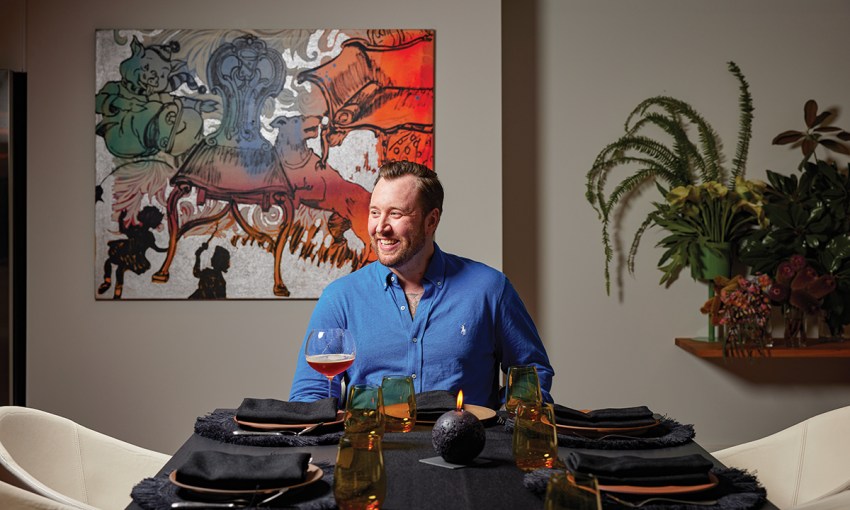Restaurant Botanic’s executive chef Justin James has spent the past two years changing the essence of fine dining in Adelaide. Step inside this very special dinner party with the chef who has made his Adelaide restaurant the best in the country.
Head of the table
It’s Monday morning and acclaimed chef Justin James is running a little late. When he meets SALIFE, he apologises with: “I was picking up some green ants”.
His excuse might be unique, but coming from one of the country’s most innovative chefs, it’s entirely plausible. Justin is in preparation mode for a special dinner party later in the day.
Since moving to Australia eight years ago, the United States-born chef has fully entrenched himself in native ingredients and his ever-changing menu at the award-winning Restaurant Botanic is a love letter to all of those unique flavours.
If you haven’t stepped foot in the rotunda-style building in the middle of the Adelaide Botanic Garden since Justin took over, it’s almost unrecognisable from its pre-Covid design, except for the same view of the surrounding greenery.
The hue is moodier, the kitchen is larger, the decor is modern and sleek. Justin sits down at one of the restaurant’s highly coveted tables as he describes the 150-acre farm where he grew up, an hour outside of Detroit, Michigan, in a rural township called Oxford.
It conjures the image of an idealistic childhood – canoeing on the pond and catching turtles.
Food was a little more prevalent in Justin’s world than most kids his age. His mother – a former horseback riding champion – instilled food independence early on, asking her son to make his own school lunches from around the fifth grade.
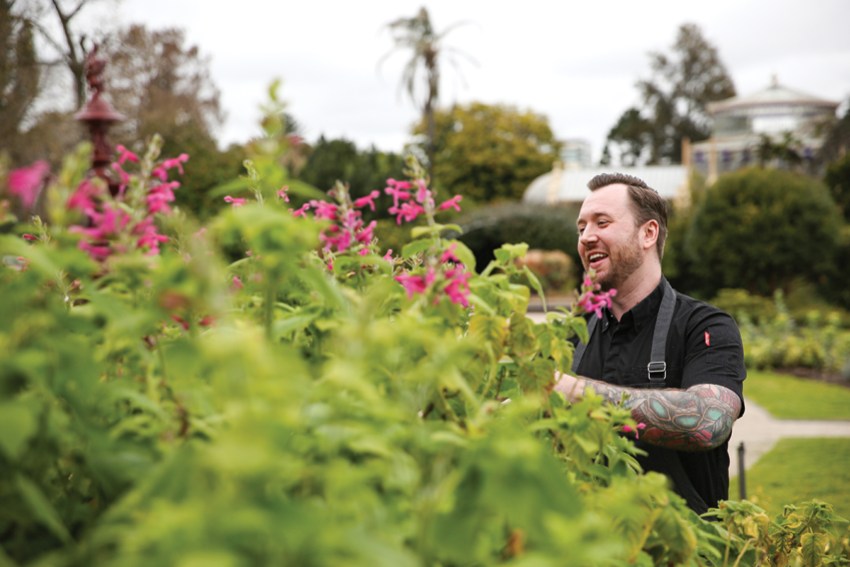
Her message was quite convincing: Girls love a man who can cook.
By seventh grade, Justin’s answer to the typical question “What do you want to be when you grow up?” was, “a chef”.
He loved watching chefs on television – the Food Network – long before the rise of the celebrity chef.
That was 25 years ago and Justin notes the industry seems a lot more rock’n’roll now, but insists it’s not at all the vision of glamour that’s sometimes projected.
The rise to one of Australia’s best chefs came with plenty of steps along the way and a laser-focused determination to reach the top.
Justin’s first job in the kitchen was born out of the necessity of keeping the 16-year-old’s car registered and full of fuel. Even in these casual eateries, he soaked up the energy of service and picked up lessons with every job.
Looking at Justin’s dishes now, they’re edible works of art, as visually intricate as they are palate-pleasing.
As a teenager working in a pizza restaurant, he remembers placing each piece of pepperoni with precision. “I always wanted to make even the pizzas look beautiful,” Justin says.
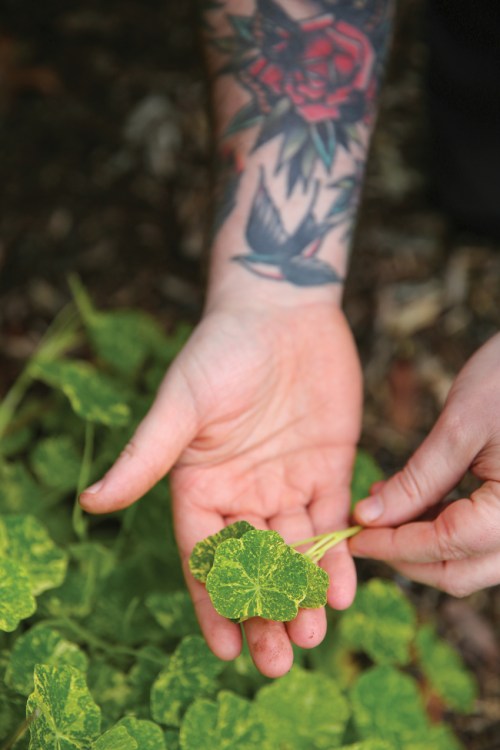
Before he had turned 18, Justin was the manager. When it came time to go to college, Justin’s father said he wasn’t going to pay for him to become a chef.
Justin’s trajectory veered, but he still worked part-time in kitchens, until he decided at 21 he was going to get serious about it and went to culinary school.
Training with a master chef from France, Justin went from
pizza and chicken wings to bouillabaisse, veal blanquette and
filet mignon.
The immersion in French food was a lesson in perfecting the basics. “Even if you’re just making a ham and cheese toastie, you want it to be perfect.
“There are three main ingredients, but you need to find the best bread, the best ham and the best cheese.
“Then, are you going to butter the bread inside and out? What about mayonnaise? I like a little Dijon. How long are you going to toast it? Are you going to toast it in a pan? A panini press?”
That last question was almost rhetorical: Justin confirms, it’s a pan with butter, of course.
After school, there was only one place Justin saw himself and so he got busy emailing restaurants in New York.
He’d get into the kitchen anywhere he could for experience. “I’d do 15-hour days. We’d do a whole service and they’d say, ‘Now you’ve got to break down the whole lambs’ and it was 1.30am. I still remember almost cutting myself, but I was like, ‘This is what it’s going to be’.”

Finally, he was offered a position at famed Blue Hill at Stone Barns outside of New York City, but the lure of a phone call from the iconic fine dining restaurant, Eleven Madison Park, was too great.
“(Working there) was like going to get my PhD,” Justin muses. “I had bad habits and they broke them. It was bootcamp, but I wanted it so bad.”
When Justin joined the team as a chef, Eleven had a single Michelin star to its name and came in at number 50 on the prestigious annual World’s 50 Best Restaurants list. In his time there, Eleven added another star, and then another, and the restaurant rose up the list. Justin had moved on by 2017, when Eleven made it to the top of the list, but says he took with him a great education.
“I learned about seasoning, ingredients, service, standards. Everything had to be perfect. Not just the food, but the way things got put away, the way things were labelled. The floor had to
be immaculate.”
That education went well beyond the food. “Someone who wants to be successful, has to have some sort of ego – a little bit is okay. With chefs, that ego is all about the food. But I learnt from Eleven Madison that food is nothing. If you ask me what’s more important – food or service – I say service. The lowest I’ll go is 51 per cent service, 49 per cent food. But nowadays I’ll say 60/40 or maybe even 70/30.
“Obviously the food has to be absolutely exceptional. But you need to know that everybody wants to be heard. They want to feel warm and welcome and looked after.
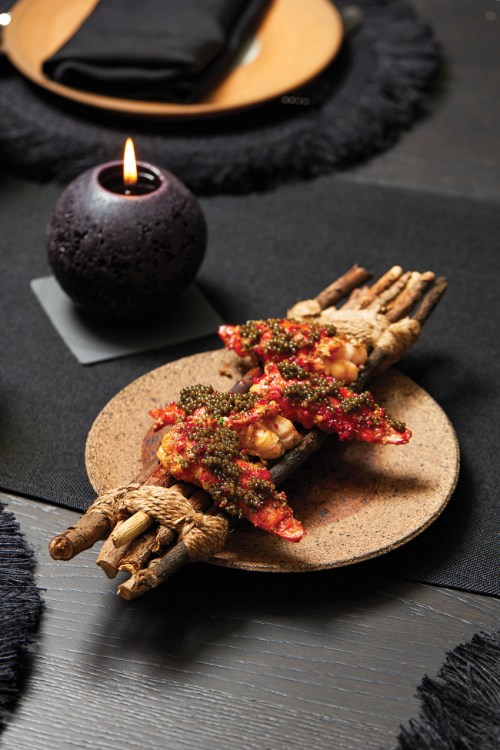
“We’ve got a judgement to make in five or 10 seconds after someone walks in the door. Is this couple coming in hot after an argument in the carpark?”
Feeling as though he’d achieved all he’d wanted at Eleven Madison Park, a spin of the globe brought Justin to Australia in 2014. His plan was to take the advice of culinary monolith Anthony Bourdain: go travel.
His plan was to work in Australia for a year, go through Asia, Europe and South America, then return to the US to a three-star restaurant. Perhaps open his own?
“Nothing really goes to plan, though, does it?”
Sitting here in Adelaide, where he’s been since 2020, clearly not.
First of all, he moved to Melbourne, and became sous chef at Vue de Monde. Three months later, he was head chef. Three months after that, executive chef. He spent almost three years in Melbourne, where he married a Danish woman and they had their son, Oscar, now eight.
The family moved to Copenhagen while Justin worked at global institution Noma, but he missed Australia and returned to Vue de Monde.
Justin and his wife separated and Justin worked in Queensland but then the Covid pandemic hit. Restaurants were closed and Justin’s ex-wife, with whom he is still best friends, worked at a medical start-up and so he moved to Melbourne to look after Oscar.
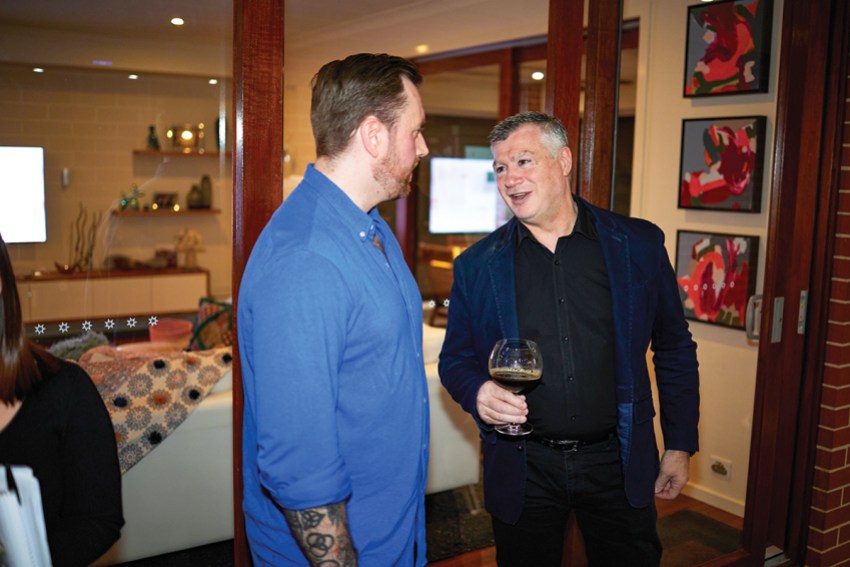
While locked down, Justin received a call from Steve Blanco, owner of the Botanic Gardens Restaurant, inviting him to head the restaurant.
“I said no,” Justin recalls. “But then I researched everything about Adelaide, the restaurant, the location of the gardens, I read about wineries, researched every restaurant I could.
“I told Steve, ‘If I come, it’s my restaurant and we have to renovate’.”
Fast forward to the present day, Steve looks on as Justin is busy at work in the St Morris kitchen of Steve’s business partner and co-owner of Restaurant Botanic, Christopher Horner.
Steve reflects on the gamble that he and Chris took, on a chef they’d never met – and whose food they’d never tasted.
“It was the best decision we ever made,” Steve says.
The rise to Gourmet Traveller’s 2023 Restaurant of the Year has been meteoric.
“I don’t feel lucky in terms of what we’ve accomplished here because that’s 20 years of hard work,” Justin says. “I do feel lucky to have met Chris and Steve though. It was a beautiful relationship from the get-go.”
In the five months Justin remained behind Victorian borders before relocating to Adelaide, he designed the kitchen and wrote concepts for the menus. Every step went back and forth over the border and as soon as restrictions lifted, Justin got to work.
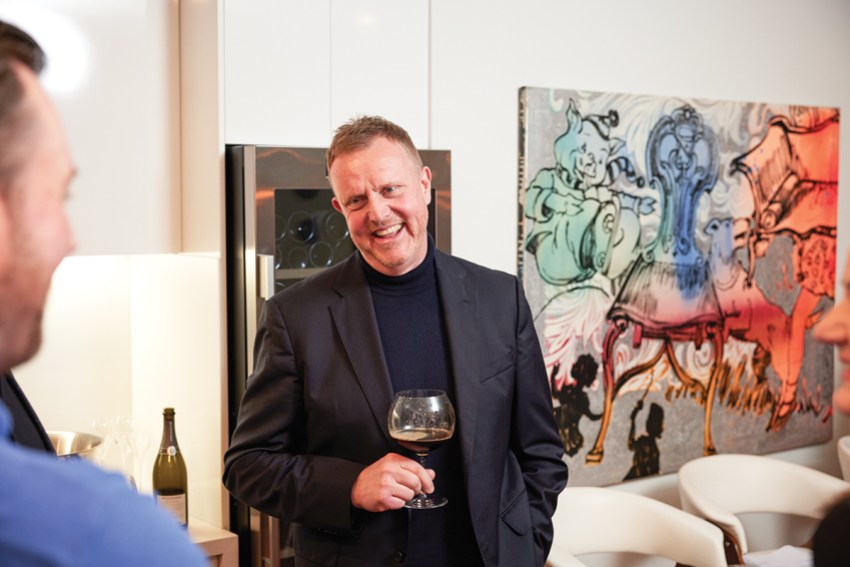
Steve recalls: “When Justin proposed what he wanted to do and started, it just grew. He didn’t come here and say we’re going to do a $350-a-head dinner – he took gradual steps. He did the hard yards and was pretty patient.
“In this industry, we come across a lot of good chefs, but he’s on another level. I’m into soccer and he’s Champions League compared with the A-League. Everything he talks about and wants to do is about the customers. If it’s changing or fixing something, it’s about the customers, not about what he wants. Sometimes we look at it and we pinch ourselves.”
Justin declared early on that he wanted to create an experience nobody had seen before, not just in Adelaide, but in Australia. He wanted to create something special for the world.
Tonight’s dinner party is a sample of that. Justin’s in the kitchen with Restaurant Botanic’s head chef, Jamie Musgrave, listing the order of preparation for the dishes.
There’s grilled scallop and abalone salad dressed in “Botanic Garden curry dressing”, marron with green ants and macadamia brown butter, and kangaroo with fermented bearnaise.
One really special ingredient on the menu is maitake mushroom, which were illegal to grow in Australia up until a few months ago – they were considered an invasive species. Now, they can be grown with a permit and Justin got his hands on some from Melbourne. Tonight, he’s glazing them in a native XO sauce and grilling them whole.
There’s also chips tossed in truffle and chives … because Justin insists you can’t have a party without chips.
For dessert, it’s mushroom fudge, quandong and vanilla, and Davidson plum roll-ups.
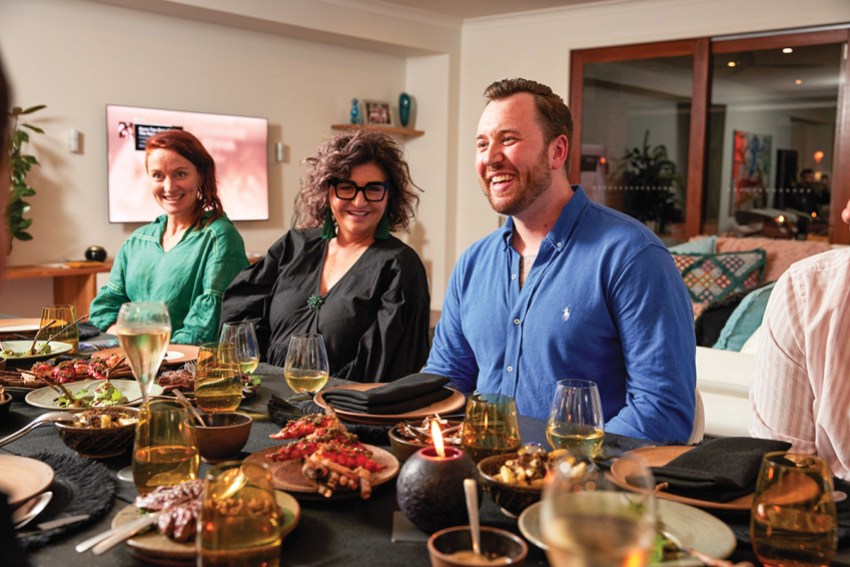
There’s barely any cutlery to be seen – Justin is a big believer in eating with your hands, both tonight and at Restaurant Botanic.
“We don’t take ourselves too seriously, but we’re very serious about what we do,” he explains. “We’re a fine dining restaurant where you’ll almost always find yourself eating with your hands. We have some nice cutlery, but this is more fun and engaging.
“A lot of people don’t like the idea of going to a tasting menu restaurant because sometimes it’s below average and you’re there for a few hours. I want it to be fun and exciting and a celebration of life and a good time.”
As he skewers tonight’s seafood, Justin reflects on the luxuries of working with the ingredients he gets to play with each day. To him, luxury is green ants, kangaroo and bunya bunya.
But perhaps the greatest luxury is discovering new things, just as he did when he moved to Australia.
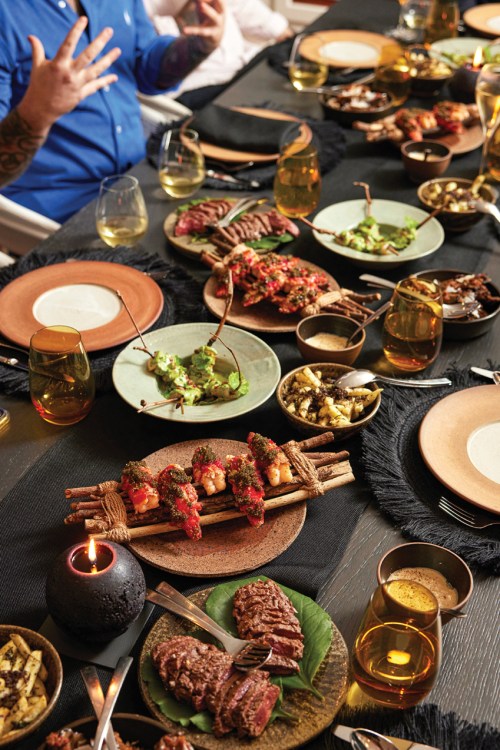
“When you’re seven years old and you try something that’s bitter, you don’t like it. As you grow older and your palate gets more mature, you like it. Travelling the world and trying new ingredients, it’s like you’re seven years old again.”
As the guests arrive they are given a glass of Deviation Road’s special sparkling wine, created exclusively for Restaurant Botanic. Fittingly, Deviation Road’s Kate and Hamish Laurie are on tonight’s guest list. Kate says the partnership with Botanic made her nervous at first because she didn’t want to create a gimmick, but says the team at the restaurant were all very serious about the project.
“It was about complementing the characters of the wine we already had. We used lemon myrtle and mountain pepper,” Kate says. “There’s already spice from the pinot and citrus from the chardonnay, so it complemented the flavours perfectly.”
If the guests are after something a little stronger, Justin is in the kitchen preparing a tray of cocktails.
As he stirs, a tray of perfect ice cubes hints at the level of detail Justin puts into everything he does. To create these transparent ice cubes with faultless edges, the process involves much more than a home freezer.
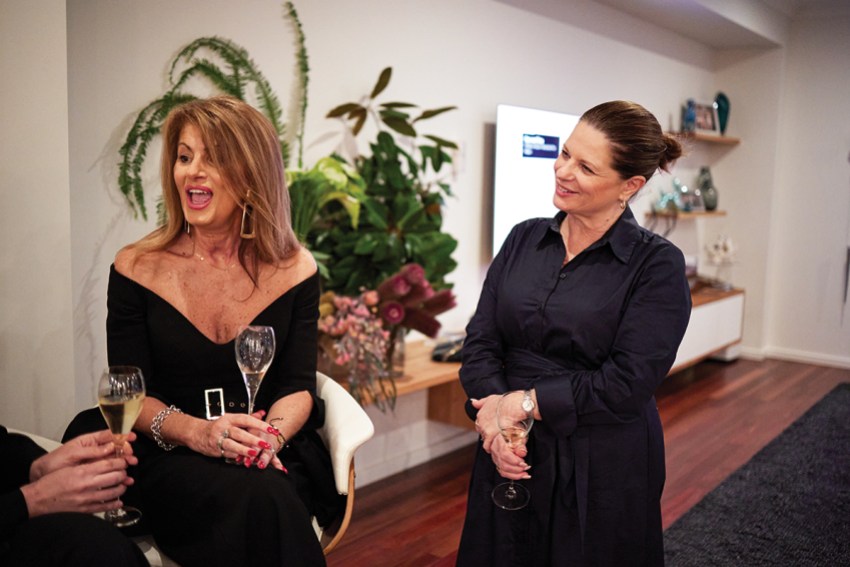
He explains, firstly, you fill a polystyrene box with water, let it freeze over three days as the gasses are released, next chainsaw the ice into smaller portions and then handsaw them into shape. When you’re ready for them, temper them at room temperature for a minute or two and then run under cold water.
Also here tonight is Chris’s wife, Kate Horner, Steve Blanco’s wife, Lucia Baldessin, Tasting Australia Festival director Karena Armstrong and former MasterChef contestant and marketing director of Fight Food Waste Ltd, Mandy Hall, who relishes the opportunity to enjoy Justin’s menu.
“Being able to sit casually with people from the industry and talk about ingredients and food and really pull it apart is fantastic,” Mandy says. “All the egos are away, there’s no service, it’s just really authentic conversation.”
It’s clear Justin’s story is one of great success, but he says his best learning experiences come from failure – although, it must be said, failure is relative.
He remembers being yelled at by a chef as a teenager for dropping a bucket of soup all over the kitchen floor. Then there was the time he had to own up to smashing a bottle of expensive yuzu with the handle of a mop. There was also the time he discarded precious ingredients.
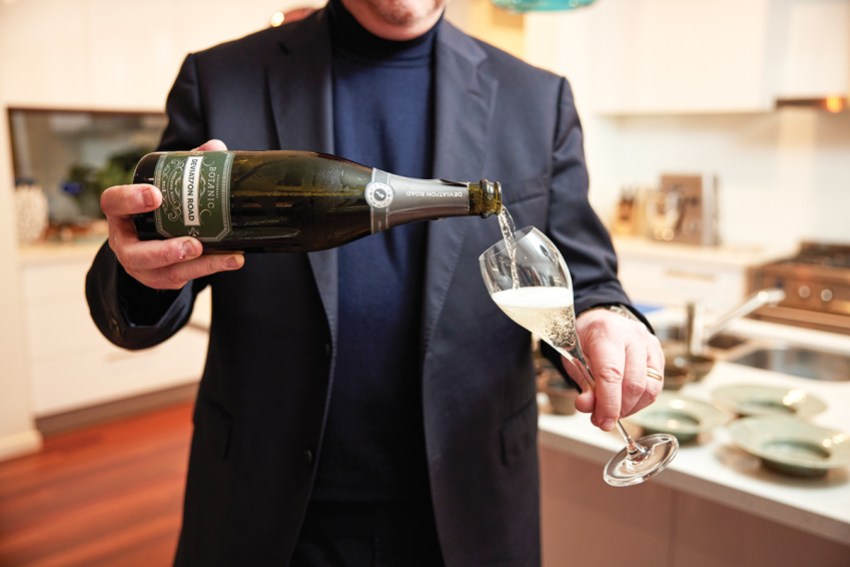
“When I was at Eleven Madison, I threw away 10 leftover lobster mandolins after the last clam bake order came in. And then the chef asked for two more lobster mandolins because customers wanted extra. I got yelled at for that. To this day, I tell my team that even if their section is done, don’t throw anything away. Once in a while, guests will say, ‘That’s the best thing I’ve ever eaten, I’d love one more slice’. Being able to do that is real service.”
By far, the best reviews Justin’s ever received don’t come
from critics.
“The customers are the ones that keep the lights on and they’re the ones that really matter,” he says. “It’s day-to-day hearing ‘This is the best meal of my life’. Every time I hear it, I tear up. I’m not even joking.”
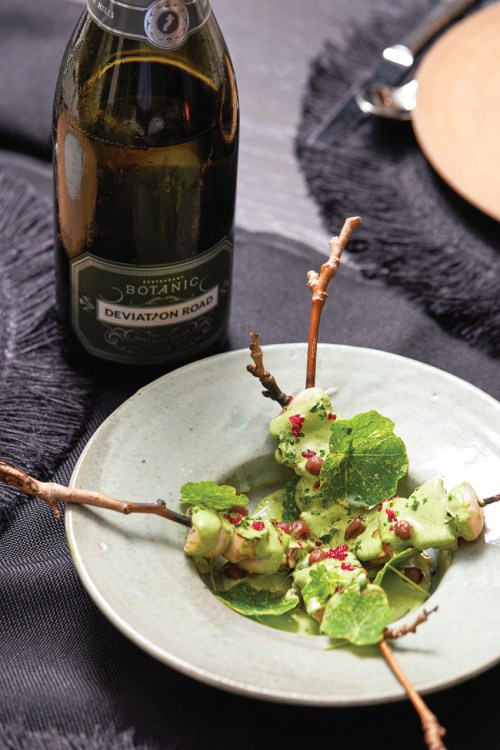
This article first appeared in the September 2023 issue of SALIFE magazine.



